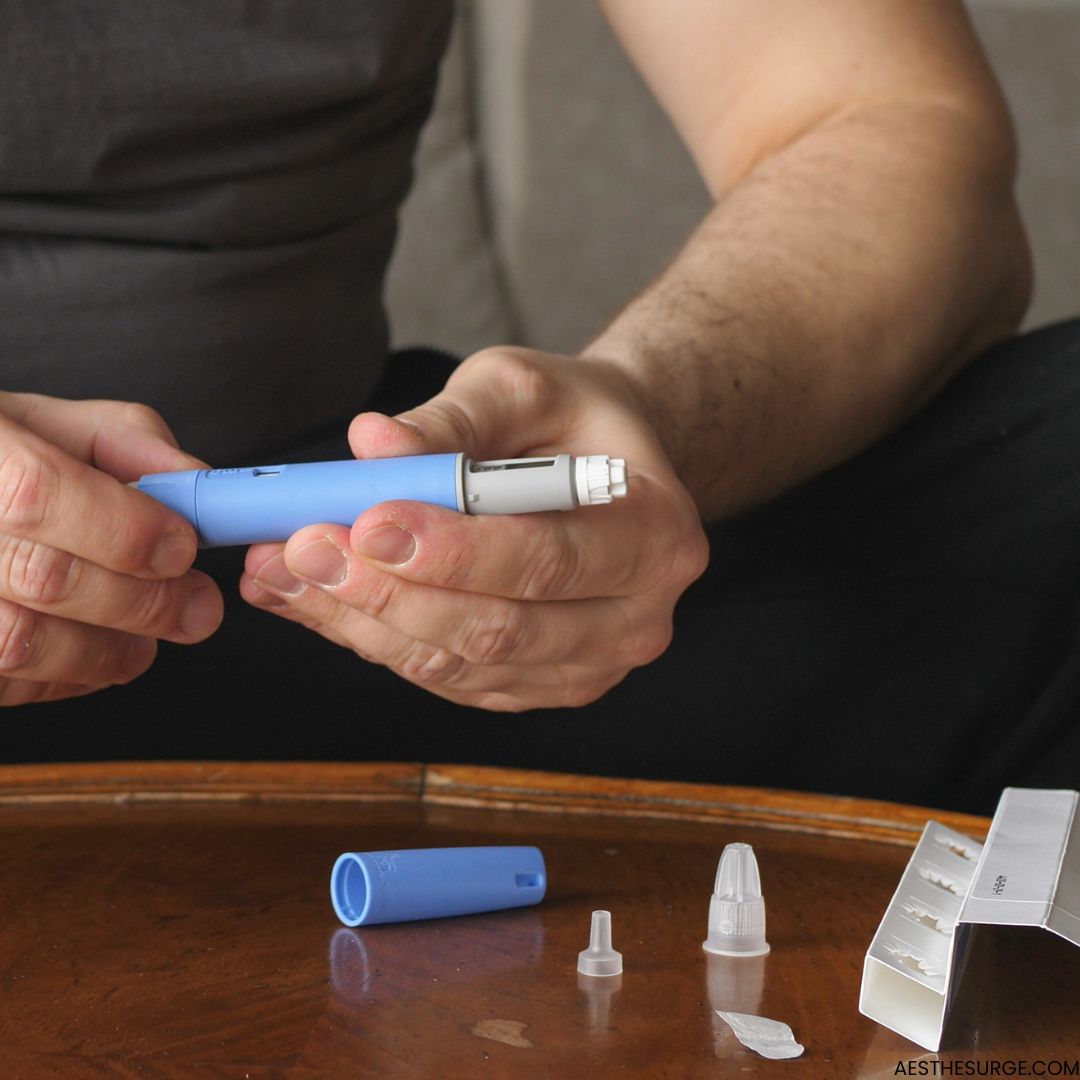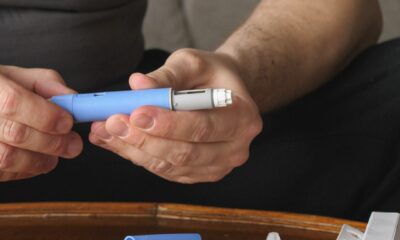Fat Loss Injections
Comparison Liposuction vs Fat Dissolving Injections in Pakistan
There was a time when people accepted their physical appearances without seeking external modifications. Concepts like fat-dissolving injections or liposuction were either unheard of or considered a luxury for the elite. However, in today’s fast-paced and image-conscious society, weight-related concerns have become more common—and so has the urge to find quick, effective solutions.
If you’re struggling with stubborn fat that doesn’t respond to diet and exercise, you’re not alone. Among the many fat-loss treatments available in Pakistan, liposuction and fat-dissolving injections are two of the most discussed and effective options. This article will offer a comprehensive comparison to help you understand which option may suit your needs best.
What is Liposuction?
Liposuction is a surgical fat removal procedure used to remove excess fat from specific areas of the body such as the stomach, hips, thighs, buttocks, arms, or neck. It’s more than just fat removal—it also reshapes and contours the body, often referred to as body sculpting or lipoplasty.
How Liposuction Works
The procedure begins with an infusion of a diluted local anesthetic to minimize pain and bleeding. A thin, hollow tube called a cannula is then inserted into small incisions, and fat is suctioned out using a surgical vacuum or syringe.
Is Liposuction Safe?
Generally, liposuction is considered safe when performed by trained professionals. However, patients are evaluated based on medical history, goals, and overall health. Smokers are typically advised against undergoing the procedure due to a higher risk of complications.
Liposuction for Double Chin
Liposuction can also target small areas like a double chin. A small incision is made under the chin to remove fat using a micro-cannula, improving facial definition.
Side Effects of Liposuction
- Fluid accumulation
- Numbness or infection
- Fat embolism (rare)
- Internal organ damage (very rare)
- Heart or kidney issues
- Lidocaine toxicity in rare cases
Liposuction Cost in Pakistan
Liposuction prices vary by city and surgeon. In general:
- Cost range: PKR 80,000 to PKR 150,000 per area
- Locations: Available in major cities like Islamabad, Lahore, and Karachi
What Are Fat Dissolving Injections?
Fat-dissolving injections are non-surgical treatments that target local fat deposits by injecting deoxycholic acid, a bile acid that breaks down fat. The destroyed fat cells are then naturally flushed out by the lymphatic system.
Are They Safe?
Yes, when administered by qualified professionals. Deoxycholic acid is naturally produced in the body and has been approved by the FDA in the form of Kybella for submental fat (double chin).
Do Fat Dissolving Injections Work?
Yes, they can be highly effective for mild to moderate fat reduction. While not as aggressive as liposuction, their results are long-lasting if a healthy lifestyle is maintained.
How Long Do They Take to Show Results?
It typically takes 8 weeks to see noticeable results, as the body gradually eliminates the broken-down fat cells.
Side Effects of Fat Dissolving Injections
- Redness and swelling at the injection site
- Temporary numbness or firmness
- Bruising or skin irritation
- In rare cases: ulcers, scarring, or nerve damage
Swelling and Recovery After Injections
You may experience swelling and tenderness in the treated area for a few days. The skin may feel firm or numb, but this improves gradually over the weeks following the treatment.
Frequency of Sessions
To achieve visible and lasting results:
- Recommended sessions: 2–4 treatments
- Interval: At least 4 weeks between sessions
Diet After Treatment
For best results, stick to a low-carb, high-protein diet for 72 hours post-treatment. Avoid foods like bread, rice, and potatoes, and focus on lean proteins and vegetables to support fat metabolism.
Fat Dissolving Injections Cost in Pakistan
The price varies depending on the body area and amount of fat.
- Starting price: PKR 50,000 per session
- Availability: Offered at Aesthesurge Clinic, Blue Area, Islamabad
Liposuction vs Fat Dissolving Injections – Key Differences
| Feature | Liposuction | Fat Dissolving Injections |
|---|---|---|
| Procedure Type | Surgical | Non-Surgical |
| Anesthesia | Local/General | Not required |
| Downtime | 1–2 weeks | Minimal |
| Effectiveness | Removes large volumes of fat | Ideal for smaller fat pockets |
| Duration for Results | Instant (after healing) | 6–8 weeks post-treatment |
| Side Effects | Invasive, more complications | Mild, mostly swelling or redness |
| Cost in Pakistan | PKR 80,000–150,000+ | PKR 50,000+ per area |
Final Thoughts
If you are considering body contouring and fat reduction in Pakistan, understanding the pros and cons of each method is essential. Liposuction may offer immediate and dramatic results, but it involves surgery and recovery time. On the other hand, fat dissolving injections provide a non-invasive alternative for people with small to moderate fat deposits and minimal downtime.
Need Help Deciding?
At Aesthesurge Clinic, our certified procedure specialists offer personalized consultations to help you choose the right treatment option for your body goals. Book your consultation today and take the first step toward a sculpted, confident you!
Blog
Mounjaro Price in Pakistan

Introduction: Why Mounjaro is the Talk of the Town in Pakistan
In recent years, weight management and diabetes treatment have seen revolutionary advancements worldwide. One name that has gained massive attention both internationally and now in Pakistan is Mounjaro (Tirzepatide). Originally approved by the FDA for the treatment of type 2 diabetes, Mounjaro quickly became popular for its unparalleled weight loss results. Patients who previously struggled with obesity or poor metabolic control are now turning to Mounjaro as a life-changing solution.
But with this growing demand comes a very common question: What is the Mounjaro injection price in Pakistan, and where can you get it safely?
This detailed guide will cover everything you need to know about Mounjaro’s cost, benefits, availability, side effects, and comparison with other weight loss injections like Saxenda, Ozempic, and Wegovy. By the end, you’ll also learn why it is strongly recommended to get Mounjaro treatment at Aesthedoc Clinic Islamabad and Aesthesurge Clinic Rawalpindi — two of the leading names in medical aesthetics and weight loss management in Pakistan.
Mounjaro Price in Pakistan
The price of Mounjaro in Pakistan varies depending on the dosage strength, availability, and whether you are purchasing it directly from a pharmacy or receiving it under the supervision of a certified clinic.
- On average, the Mounjaro injection price in Pakistan ranges from PKR 90,000 to PKR 150,000 per pen depending on the milligram dosage and supply chain.
- Some online pharmacies claim to offer cheaper options, but patients are strongly advised to avoid unverified sellers, as counterfeit or expired products are a serious risk in Pakistan’s market.
- At Aesthedoc Clinic Islamabad and Aesthesurge Clinic Rawalpindi, Mounjaro treatment is provided under professional guidance, ensuring safe storage, correct dosage, and medically supervised administration.
💡 Pro tip for patients: Always remember that while the price matters, your safety and results depend on choosing a clinic that specializes in weight loss injections.
How Does Mounjaro Work?
Mounjaro contains Tirzepatide, a first-of-its-kind medication that works as a dual GIP and GLP-1 receptor agonist. Unlike traditional diabetes or weight loss medications that target just one pathway, Mounjaro works on two powerful mechanisms:
- Regulating blood sugar – improving insulin sensitivity and lowering glucose levels.
- Suppressing appetite & slowing digestion – making you feel full for longer, reducing calorie intake naturally.
This unique mechanism makes Mounjaro far more effective for weight reduction compared to alternatives like Saxenda or Ozempic.
Benefits of Mounjaro for Weight Loss & Diabetes
Mounjaro has been hailed as a game-changer because of its wide range of benefits:
- Rapid weight loss results – many patients lose up to 15–20% of their body weight over several months.
- Better diabetes management – improved blood sugar control for type 2 diabetic patients.
- Reduced appetite & cravings – making diet control easier.
- Long-term sustainability – patients often find weight loss easier to maintain.
- Boosted energy & confidence – thanks to a healthier metabolism.
For patients in Pakistan, this means a real solution to weight issues that were once only manageable through surgery or extreme dieting.
Mounjaro vs Saxenda vs Ozempic vs Wegovy
When searching for weight loss injections in Pakistan, you will come across multiple options. Here’s how Mounjaro compares:
| Injection | Active Ingredient | Avg. Price in Pakistan | Effectiveness for Weight Loss | Availability |
|---|---|---|---|---|
| Mounjaro | Tirzepatide | PKR 45,000 – 70,000 | ★★★★★ (Up to 20% body weight reduction) | Limited, available at top clinics |
| Saxenda | Liraglutide | PKR 25,000 – 35,000 | ★★★ (8–10% body weight reduction) | Widely available in pharmacies |
| Ozempic | Semaglutide | PKR 35,000 – 50,000 | ★★★★ (12–15% body weight reduction) | Available but often in shortage |
| Wegovy | Semaglutide (higher dose) | PKR 45,000 – 65,000 | ★★★★★ (Similar to Mounjaro, but higher cost) | Not widely available in Pakistan yet |
👉 As seen above, Mounjaro leads the race in terms of both effectiveness and popularity. While Saxenda and Ozempic remain strong alternatives, Mounjaro’s unique dual-action mechanism offers unmatched weight loss results.
Possible Side Effects of Mounjaro
Like any medication, Mounjaro may cause side effects, especially in the beginning. Common but usually mild symptoms include:
- Nausea
- Vomiting
- Diarrhea
- Decreased appetite
- Fatigue
Most of these symptoms improve as the body adjusts to the medication. However, this is exactly why professional supervision at a clinic is important. Self-injecting without medical guidance can increase risks.
Why You Should Choose a Clinic Instead of Self-Use
While some patients try to buy Mounjaro online or from unverified pharmacies, the risks are high:
- Fake or expired injections
- Incorrect dosage leading to complications
- No medical monitoring for side effects
- Poor storage (insulin-based injections require strict refrigeration)
At Aesthedoc Clinic Islamabad and Aesthesurge Clinic Rawalpindi, patients benefit from:
✅ Certified doctors & aesthetic physicians
✅ Proper dosage guidance
✅ Safe injection administration
✅ Regular progress monitoring
✅ Customized weight loss programs
FAQs on Mounjaro Price & Usage in Pakistan
1. What is the current Mounjaro price in Pakistan?
The average cost ranges between PKR 45,000 – 70,000 per pen, depending on the dosage.
2. Is Mounjaro better than Saxenda or Ozempic?
Yes, studies show Mounjaro offers more significant weight loss results than both Saxenda and Ozempic.
3. Can I buy Mounjaro without a prescription in Pakistan?
It is strongly advised to use Mounjaro under medical supervision only, as it requires proper dosage and monitoring.
4. How long before I see results?
Most patients notice weight loss within 4–6 weeks, with significant results over 3–6 months.
5. Where can I get Mounjaro injections in Islamabad and Rawalpindi?
You can safely receive treatment at Aesthedoc Clinic Islamabad or Aesthesurge Clinic Rawalpindi, where certified experts administer the injections.
Final Thoughts: Transform Your Weight Loss Journey with Mounjaro
Mounjaro is not just another weight loss trend — it is a scientifically proven, FDA-approved solution that has changed the lives of thousands worldwide. In Pakistan, it is now available for patients who are serious about taking control of their weight and health.
While the Mounjaro price in Pakistan may seem high compared to alternatives, the results, safety, and life-changing impact make it worth every rupee.
💡 If you’re ready to begin your journey, book your consultation today at:
👉 Aesthedoc Clinic Islamabad
👉 Aesthesurge Clinic Rawalpindi
Take the first step toward a healthier, more confident you.
Fat Burning Medications
Should You Follow Natural Ways To Lose Weight
Are you tired of restrictive diet plans and rigorous gym routines? If you’ve been struggling to lose weight without seeing lasting results, it’s time to explore natural weight loss remedies. These home treatments are simple, cost-effective, and often rely on ingredients already in your kitchen. Say goodbye to fad diets and hello to sustainable health with these proven strategies.
Why Natural Weight Loss Remedies Work
Natural remedies focus on nourishing the body, maintaining metabolic health, and avoiding the yo-yo effect caused by crash diets. Unlike extreme regimens, these methods offer gradual, sustainable weight reduction by enhancing digestion, metabolism, hydration, and mindful eating.
1. Start Your Day with Honey Lemon Water
A classic home remedy to boost metabolism and detoxify the body:
- Mix 2 teaspoons of honey and lemon juice in a glass of warm water.
- Drink on an empty stomach daily.
- This concoction supports fat breakdown and improves digestion naturally.
2. Spice Blend: Carom, Black Cumin, and Fenugreek
These Ayurvedic ingredients are powerful in their combined effect:
- Fenugreek (Methi) boosts metabolism.
- Carom (Ajwain) aids digestion.
- Black cumin (Kalonji) targets belly fat.
Grind equal parts of each after dry roasting and consume a teaspoon with warm water every morning.
3. Cinnamon and Honey Infusion
Curbs sugar cravings and stabilizes insulin levels:
- Boil water and add 2 cinnamon sticks and 1 teaspoon of honey.
- Consume lukewarm on an empty stomach.
- Enhances fat metabolism and regulates blood sugar.
4. Chewing Raw Garlic Daily
Despite the strong taste, chewing 2 cloves of raw garlic daily enhances fat-burning processes and supports cardiovascular health.
Tip: Brush your teeth after to avoid lingering odor.
5. Eliminate Artificial Sugars
Refined sugars are a major contributor to weight gain. Instead:
- Use natural sugars from fruits and vegetables like carrots, onions, and pumpkins.
- Avoid sweets, aerated drinks, and processed snacks.
6. Hydration: The Overlooked Fat Burner
Water helps with detoxification and fat metabolism:
- Calculate your ideal intake: Body weight (kg) ÷ 30 = liters/day.
- E.g., 65 kg = approx. 2.1 liters/day.
Staying hydrated boosts energy and curbs false hunger signals.
7. Sleep: The Metabolism Regulator
A consistent 8-hour sleep cycle enhances:
- Hormonal balance
- Metabolic rate
- Appetite regulation
Inadequate sleep often triggers cravings and slows weight loss.
8. Small Plate Strategy: The Psychology of Eating
Your brain is tricked into thinking you’re eating more when you use smaller plates:
- Reduces portion size naturally.
- Prevents overeating without conscious effort.
9. Frequent Mini Meals
Eating every 3–4 hours keeps blood sugar stable and curbs hunger:
- Helps avoid bingeing during main meals.
- Keeps metabolism active throughout the day.
10. Go Raw (with Precaution)
Raw vegetables like carrots, spinach, lettuce, and tomatoes are:
- High in fiber
- Low in calories
- Great for digestion and detox
Always opt for organic produce to avoid pesticide intake.
11. Mindful Eating: Chew Thoroughly
Proper chewing helps:
- Trigger fullness cues
- Aid digestion
- Reduce portion size
Take time to chew each bite at least 20–30 times.
12. Choose Whole Grains Over Refined Flour
Refined carbs like maida are empty calories. Instead, go for:
- Whole wheat flour (Atta)
- Brown rice
- Oats or quinoa
These high-fiber grains support longer satiety and stable energy.
13. Quit Smoking to Boost Weight Loss
Smoking reduces physical stamina and metabolism. Quitting helps:
- Restore lung and heart health
- Enhance physical activity levels
- Improve overall well-being
14. Stress Management Is Key
Chronic stress increases cortisol, leading to weight gain:
- Practice meditation, yoga, or deep breathing.
- Schedule regular breaks or vacations.
- Focus on enjoying the present.
15. Yogurt: Gut-Friendly and Satiating
Unsweetened yogurt supports:
- Gut health with probiotics
- Satiety without adding excess calories
- Use in smoothies or as a salad dressing
Quick Reminders That Support Weight Loss
- Never skip breakfast.
- Eat at fixed times daily.
- Avoid junk food – don’t even buy it.
- Exercise daily, even if just walking or stretching.
Natural Juices for Fat Loss
Here are 4 effective weight-loss-friendly juice recipes:
- Green Juice: Kale, cucumber, green apple, celery, lemon, and ginger.
- Watermelon Juice: Watermelon, lemon, and mint.
- Apple Zinger: Apple, lemon, ginger, cayenne.
- Veggie Detox: Tomato, carrot, beetroot, spinach, celery, garlic.
These juices are low in calories, rich in antioxidants, and promote hydration.
Avoid Crash Diets: They Don’t Work Long-Term
- Fasting or fruit-only diets shrink fat cells temporarily but don’t eliminate them.
- Once the routine is stopped, fat cells regain volume.
- Real change happens when fat cells are destroyed, not just reduced.
Permanent Fat Loss with Fat-Dissolving Injections (FDIs)
While natural remedies are excellent for sustainable health, if you’re considering advanced options like fat-dissolving injections (e.g., Kybella, Aqualyx), it’s essential to:
- Choose safe, certified treatments.
- Understand that these permanently eliminate fat cells from your body.
- Unlike diet-only methods, fat cells don’t return post-FDI.
FDIs also help in inch loss and sculpting, without burdening your kidneys or liver.
Top Home Workouts to Support Weight Loss
Balance your natural diet with home-friendly workouts like:
- HIIT: 20–30 minutes of intense intervals.
- Bodyweight circuits: Push-ups, squats, mountain climbers.
- Yoga & Pilates: Flexibility and core strength.
- Jump rope: High calorie-burn with little space needed.
- Stair workouts: Step-ups, stair runs.
Consistency, not intensity, is key to long-term results.
So, Should You Follow Natural Ways to Lose Weight?
Absolutely. Natural methods encourage balance, awareness, and long-term health. While quick fixes shrink fat cells temporarily, they don’t address the root causes or eliminate the fat structure. Only permanent solutions like FDIs can fully remove fat cells.
But whether you choose natural remedies or clinical solutions, the path to weight loss begins with informed decisions and consistent effort.
Ready to Take Control of Your Weight?
Whether you’re considering natural weight loss or safe fat-dissolving options, take the next step toward your transformation.
Contact Aesthedoc Clinic today at +92 333 7277272 and begin your journey to a healthier, more confident you.
Blog
Weight Loss Injections Kybella VS Ozempic Review
When it comes to non-surgical weight loss solutions, two injectable treatments often come up in discussion—Kybella and Ozempic. While both methods claim to reduce body fat, they work very differently and come with unique advantages and disadvantages. If you’re looking for safe, effective, and long-lasting fat reduction, understanding the difference between these two treatments is essential.
At Aesthesurge Clinic, we prioritize clarity and patient education to help you make informed decisions. This post offers a complete review of Kybella vs Ozempic injections—exploring their mechanisms, benefits, risks, and costs.
What Is Kybella?
Kybella is an FDA-approved injectable treatment designed to target submental fat, commonly known as the double chin. It uses synthetic deoxycholic acid, a substance naturally found in the body, to break down and destroy fat cells permanently.
How Does Kybella Work?
When injected into the fat beneath the chin, Kybella destroys fat cells so they can no longer store or accumulate fat. The body naturally eliminates these destroyed cells over time, resulting in a more contoured and defined jawline.
Key Benefits of Kybella:
- Non-surgical alternative to liposuction
- FDA-approved for submental fat reduction
- Permanent fat loss once treated cells are removed
- Minimal downtime with quick sessions (15–20 minutes)
What’s in Kybella?
Each 2 mL vial contains:
- Active ingredient: 20 mg synthetic deoxycholic acid
- Inactive ingredients: Benzyl alcohol, sodium chloride, sodium hydroxide, and phosphate buffers
This formulation ensures fat is broken down effectively while minimizing side effects when administered by trained professionals.
Common Kybella Side Effects
While Kybella is generally well-tolerated, some mild side effects include:
- Swelling and redness
- Bruising or tenderness
- Numbness in the treated area
In rare cases, patients may experience:
- Difficulty swallowing
- Facial muscle weakness
- Nerve damage (temporary)
It’s crucial to get treated by a certified provider to reduce the risk of complications.
How Long Does Kybella Take to Work?
You may start to notice visible fat reduction and skin tightening within 4–6 weeks. Results typically improve over 2 to 4 months, with most patients requiring 2–4 sessions spaced a month apart.
Kybella Treatment Cost in Pakistan
On average, Kybella costs between PKR 35,000 to PKR 65,000 per session. The total number of sessions depends on the severity of submental fat and your aesthetic goals.
What Is Ozempic?
Ozempic (semaglutide) is a prescription medication initially designed to manage type 2 diabetes. It belongs to the GLP-1 receptor agonist family and works by stimulating insulin release, slowing digestion, and controlling blood sugar.
Can Ozempic Help with Weight Loss?
While Ozempic is not FDA-approved for weight loss, many patients have reported appetite suppression and gradual weight reduction. However, the weight loss is often temporary—most users regain the lost weight after stopping the injections.
Ozempic Side Effects and Concerns
Although some experience positive results, Ozempic has been linked to a range of serious side effects, including:
- Nausea, diarrhea, or constipation
- Abdominal pain and bloating
- Increased risk of pancreatitis
- Kidney damage or failure
- Gallbladder issues
- Thyroid tumors in rare cases
- Worsening of diabetic retinopathy (vision loss)
Due to these potential complications, Ozempic is not generally recommended for cosmetic weight loss at Aesthesurge Clinic.
Weight Loss Sustainability: Kybella vs Ozempic
| Feature | Kybella | Ozempic |
|---|---|---|
| FDA-approved for weight loss? | ✅ (Submental fat) | ❌ (Off-label use for weight loss) |
| Type of procedure | Injectable, fat-dissolving | Weekly injectable, appetite suppressant |
| Fat cell removal | Permanent (destroys fat cells) | Temporary (fat returns after stopping) |
| Side effects | Mild & localized | Systemic and potentially severe |
| Maintenance required | No | Yes—lifestyle changes essential |
| Average cost | PKR 35,000–65,000 per session | Around PKR 20,000/month (if not insured) |
Final Verdict: Which Injection Should You Choose?
Kybella is a safe, targeted, and permanent solution for individuals seeking to eliminate stubborn fat under the chin without surgery. Its FDA approval and fat-destroying mechanism make it a reliable choice for long-term results.
Ozempic, on the other hand, may aid temporary weight loss but comes with significant health risks and is not recommended unless prescribed for diabetes management. Weight often returns after discontinuation, and the side effects may outweigh the short-term benefits.
At Aesthesurge Clinic, we prioritize treatments that are safe, science-backed, and tailored to your goals.
-

 Blog11 months ago
Blog11 months agoFace Lift in Islamabad
-

 Blog8 months ago
Blog8 months agoLaser Skin Tightening in Rawalpindi Islamabad Lahore
-

 Blog3 months ago
Blog3 months agoMounjaro Price in Pakistan
-

 Blog8 months ago
Blog8 months agoPRP Stem Cell Exosomes in Pakistan AestheSurge
-

 Blog8 months ago
Blog8 months agoHymen Repair Surgery Treatment Results in Pakistan
-
Blog2 years ago
Weight Loss Injections, Saxenda Injection Treatment Price in Pakistan
-

 Blog8 months ago
Blog8 months agoMicroneedling Treatment Cost in Pakistan AestheSurge
-

 Blog8 months ago
Blog8 months agoHIFU Treatment Cost in Pakistan
